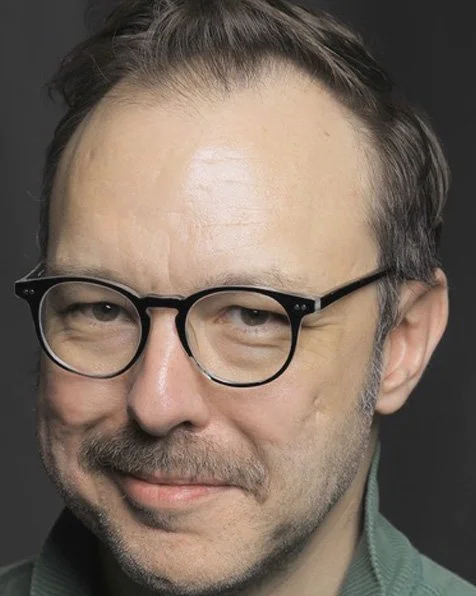

Services
Visioning & Meeting Facilitation
Effective visioning and meeting facilitation helps build consensus to cultivate strategic direction, unity, and purpose for current or future initiatives. When empowered, visioning participants unite through interactive dialogue and collaboration to develop and confirm priorities and strategies to reflect core organizational business goals.
Strategic Planning
Effective strategic planning can open new paths and unleash ideas that can lead to innovative organizational actions. Planning projects might focus on what the organization is or could be, what new opportunities might be uncovered, how organizations can improve the experience of their clients, how new markets might be developed, or how the organizational brand promise can be better realized.
Design Strategy for Architecture and Interiors
People spend the majority of their time in groups, and for most, the built environment is a primary focal point. Research on workplace behavior, productivity, and innovation points to the importance of designing spaces and places within a strategic organizational framework; an effective built environment strategy begins with an awareness of the organizational promise, aspirations, and current state, assesses user needs and desires at a deep level, and ultimately drives issues such a site selection and design as well as potentially redeveloped processes within the enterprise.
Change Management
An organization’s desire to encourage innovation and improve effectiveness often drives change that is necessary to perform better; whether the change is a management restructuring or a move to a new location, it must be dealt with in a constructive way. Because change is about people, change management must be rooted in an understanding of social psychology in order to support new behaviors and attitudes. Whether changes are due to one-time events or planned organizational shifts, change management is an opportunity to demonstrate commitment to employees and minimize disruptions, promote core values, and increase trust and engagement.
Designing for Experience
Experience Design (or Service Design) involves planning and organizing organizational dynamics, spatial environments, behaviors and processes, communications, and other components so that organizations can ensure that all “touchpoints” are aligned with the vision and purposes of the enterprise. Experience Design assumes that a wide variety of variables - a product, a building, or a procedure or an interaction - are essentially services to clients, business partners, the community, or employees.
Innovation Training for Organizations
We tend to believe that if we find the “right” people - unique and talented creative thinkers that make things happen in better ways - then our organizations will perform better and create value. However, abstract creativity without action is of little business value in changing how things improve. Innovation is a process that can be learned, and organizations can educate people and set the stage so that there is a greater likelihood that many people are more likely to develop new and better ways of doing things.
Strategic Messaging and Marketing Communications
Once an organization reaches consensus on its purpose, mission, and initiatives, the creative challenge is then to frame the internal and external conversations – and the language - in ways that support what might be new directions and initiatives. Crystallizing ideas and intents into concrete messages and applying them to communication vehicles that positively engage people from within and outside the organization (partners, employees, clients, or communities) can mean success for dynamic organizations.
Fundraising Strategy
Determining the need for a new facility or funding a special initiative can be complex, however one of the most important components of bringing an idea to life is identifying - and generating - the financial support to realize the project at the highest level. Although it can be easy to focus on renderings or informational documents, a sound fundraising strategy involves the coordination of a variety of factors, including organizational mission, messaging vehicles, professional and personal relationships, and community relations. We have experience in fundraising and the development of aligning factors for successful fund development strategies and the production of supportive collateral, messaging and communications, and special events.
“Wicked Problems”
“Wicked Problems” refers to those situations in which answers are almost impossible to determine because the basic questions are vague, not clearly considered, and therefore solutions cannot be found – often represented by conversations about “What shall we do? How will we do it? Why are we doing what we do?” Also, because the desired solution may be difficult to define, it becomes challenging to assess what progress means, or when to stop trying to solve the situation, resulting in expensive and time-consuming efforts. Asking core questions at the beginning of a process can result in successful problem-solving and initiatives.
Presentation Coaching
Coming Soon

What
The most vexing organizational challenges today are not the ones for which an RFP can easily be issued; rather, the task of defining early what the questions might be is increasingly becoming the focus of attention. In these contexts, human-focused inquiry can open new paths and unleash actionable ideas and tactics that lead to innovation in service delivery and forge strong and lasting connections with groups of people.
Innovation and transformation cannot simply be mandated; however what organizations can do is to create the conditions under which significant improvements are far more likely to materialize, and ensure an alignment of goals with purpose that leads to exceptional experiences and organizational performance. A well-defined strategy can deliver powerful paths and drive improvements and engagement from colleagues as well as students, patients, and relevant communities. An effective approach can define and influence the expansion of services, and it can act as a rallying point for employee attraction and retention, as well as building loyalty to the organization. Attention to strategy can focus an organization on fulfilling refreshed promises to user groups in new and meaningful ways, and define innovative services and products that are more appropriate to the developing customer or client base and the future environment.
Genuine innovation requires increased collaboration and often the realignment of work practices and processes, and takes tangible commitment and behavioral change from colleagues and leaders. We know that the workplace itself must be used as a tool to support complementary paths and initiatives, and the drivers for innovation - organizational goals and promise - must be well understood and meaningful for the organization to move forward.
Because communities and organizations are facing greater complexity in terms of connecting to user groups of all types and redefining “services” in progressively complex environments, Design Thinking - a methodology for innovation that combines creative and analytical approaches and collaboration across disciplines - is increasingly being embraced as a problem-solving tool. Clearly, it is becoming even more important to understand consumers and colleagues as “users” at a deep level, and develop action strategies and platforms of service that incorporate the distinctive promises of the community or organization while remaining centered on people as users.
We believe in collaborating, co-learning and discovering with our clients in asking fundamental questions and developing compelling solutions to defined needs. Moreover, we also believe that our role is to help support and advance Design Thinking capabilities within communities or organizations so that successful problem-solving becomes a sustainable skill and practice.

Clients
Team member select clients have included:
Alcoa Fastening Systems
Amgen
Banff Centre
California Institute of the Arts
Campbell Hall School
Chevron Energy Solutions
City of Hope Medical Center
City of Peoria, Arizona
County of San Mateo Health System
Hoag Hospital
Hyundai Motors North America Headquarters
Kaiser Permanente Healthcare
Mars Foods
Microsoft Retail
Microsoft Corporate Workplace
Petra ICS
Providence Health
Stanford Health
Travel Alberta International
University of California, UC Irvine (UC Irvine Health)
University of California San Diego
University of California San Francisco (UCSF Health)
University of California Santa Barbara Art Museum

Who
Lance Carlson | Principal
Lance has been a longtime advocate and practitioner of human-centered problem-solving as a transformative tool; he has authored articles on this topic as well as served as a frequent public speaker on innovation, organizational positioning, and change management. He enjoys promoting conversations about innovation and the experiences of users, and in his exchanges with educators and healthcare leaders over the years, he has facilitated learning about how to frame questions – and act on them - differently. Drawing on a network of colleagues (educators, designers, strategists, and planners from higher education and healthcare), his role is to understand organizational needs and collaborate to shape solutions so organizations and communities of people can reach their goals.
Lance was President + CEO of the Alberta College of Art and Design in Canada, preceded by a lengthy career in a variety of academic positions in higher education as a vice president and dean in the areas of arts and sciences, design, strategic planning, academic administration, and educational business management in a number of institutions. Since joining the corporate sector in 2010 he has served as Director of Design Strategy & Brand Design at Gensler, Principal and (Founding) Director of Strategies and Corporate Development at Taylor Design, and Vice President at Continuum Innovation. Lance holds an undergraduate degree in American Culture/Sociology from California State University Fullerton and Master’s degrees in both American Culture and Design from California State University Los Angeles and California State University, Fullerton, respectively; while Sociology is his behavioral lens, Design is his methodology. He is a citizen of both Canada and the United States, and is a resident of Canada.
AnneMarie Dorland | Associate
AnneMarie is a design strategist and communications researcher; she combines her background as a designer, strategist and researcher to explore the intersections of innovation in the work practices of organizations. Her disciplinary background informs her professional work on the application of design thinking to the development of sustainable and innovative brand strategy and public relations programs.
In addition to her ongoing academic endeavors as an instructor, AnneMarie is a senior-level communication strategist with a reputation for bringing clarity, direction and cohesion to even the most complicated public relations, brand and service design projects. She served as the Director of Communications at the Alberta College of Art + Design; in that role, she was responsible for the coordination of brand development, public relations, media relations and all internal and external communications strategies for the college. In addition to speaking internationally about how Design Thinking can be effectively applied within organizations, AnneMarie has also contributed to several publications on the topic of Design Thinking. AnneMarie is passionate about understanding and sharing her expertise in the application of creative practices to business settings. She holds a B.Des. degree from the University of Alberta, an M.A. in Media and Communications from Concordia University, and completed her Ph.D. at the University of Calgary. AnneMarie is also a member of the International Association of Business Communicators (IABC), Ethnographic Praxis in Industry (EPIC), the Service Design Network (SDN), the Canadian Sociological Association (CSA), the Canadian Marketing Association (CMA), and the Design Management Institute (DMI).
Jason Mehmel | Associate
Jason Mehmel brings a background in performance, theatre, and interactive communication to client projects that involve the need to develop and present information delivery coupled with skills related to the spoken word as a medium to more fully engage enterprise audiences. Effective presentations can encourage the enrolment of colleagues in fresh initiatives, and advance dialogue within organizations and communities.
In addition to being available for presentation consulting projects, Jason is also the Artistic Director of Sage Theatre in Calgary, a boutique theatre company that creates bold and intimate productions. For fifteen years, he has produced and directed award-winning theatre presentations, and world premieres of the work of renowned playwrights. He often acts as a consulting dramaturge on narrative for theatre, fiction, and graphic novels. He has been an organizing member of TEDxYYC for the last five years; in that capacity Jason has coached architects, physicists, and economists on their presenting skills, formats, and delivery. He has served on arts-related boards such as Fight Directors Canada, and the comics festival Panel One. He holds a Bachelor of Fine Arts degree from the University of Calgary with an English minor.









